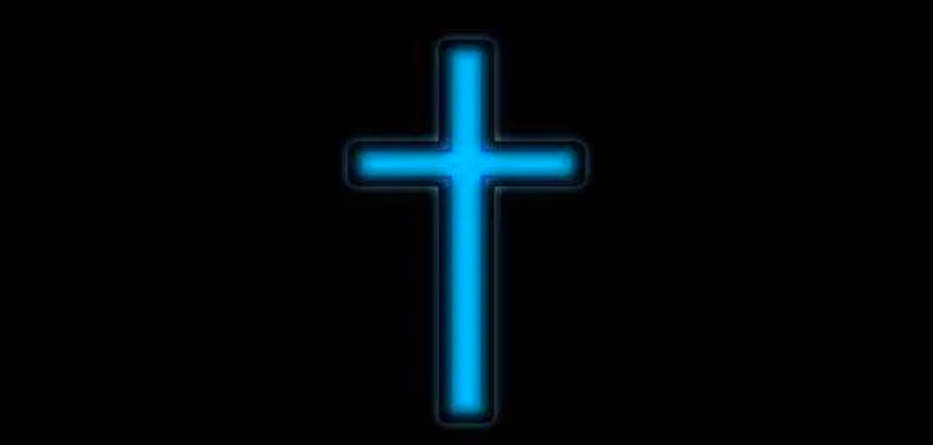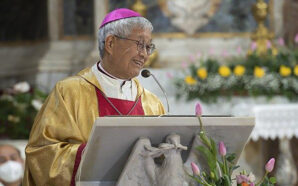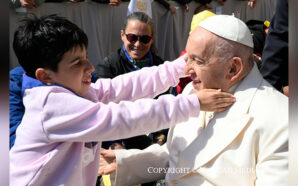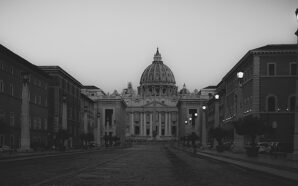The marks by which he can be known and identified.
Jesus was welcomed into Jerusalem by a crowd waving palm branches stripped from roadside trees.
We, too, live in a world full of signs and symbols. They control so much of our lives. Try driving a car in a city without lane markings and traffic lights. You will soon need a pick-up truck.
Every country has a flag depicting their national colors. Some are quite simple and straight forward in their design; others are complicated and involve many colors and motifs.
One flag that we have got painfully use to in recent weeks is that of Ukraine and its two horizontal bands — one of blue and the other of yellow.
It has been waved at marches to protest against the Russian invasion. It has been unfurled at football matches and flown from public buildings. Children carry smaller handheld versions. All are simple acts of pride and defiance.
National flags fly outside the United Nations’ headquarters in New York City in honor of the countries whose representatives debate inside the building.
Flags are flown from public buildings and on ceremonial occasions. In the UK, the sight of the Royal Standard flying over Buckingham Palace in London, is an indication that the Queen is in residence.
When the Head of State dies, national flags are flown at half-mast to signify grief.
Making a statement, expressing identity
The flying of a white flag is accepted as a sign of surrender, that the person holding it in time of conflict is not bearing arms.
Flags were used to stir up national emotion and political fervor during the rise of the National Socialist Party in 1930s Germany, paraded in vast displays with the crooked cross symbol foremost.
This question of identity was used in a detrimental way during those Nazi years when Jewish people, grown-ups and children, were made to wear a yellow Star of David, stitched to their clothing to identify their race in a derogatory manner.
Contrast that with the flags and banners held aloft at a football match, expressing the joy and enthusiasm of the many thousands of supporters watching the game. Spectators in the Liverpool Kop disappear just before kick-off under a smothering cloud of waving color.
Nowadays, when politicians address the nation or a press gathering after an important meeting, it is a common sight to see their national flag hung motionless on a stand behind them. It is a marker of who they are, who they represent. It expresses gravitas fitting to the occasion.
In the United States, the national flag very often flies from a post outside homes and sometimes can be seen on a stand in the corner of an office or living room.
The respect that the people hold for their flag is part of their culture and their inheritance. It says something about who they are, the values they hold, their pride in their land and people.
The sign of the crossIn a similar fashion, the cross or crucifix is the mark of the Christian, it tells a story of faith in Jesus the Nazarene.
This small representation of the crucified Lord can be found in many Christian homes, buildings and churches. At the same time, it is a remembrance of an historical event in Palestine some 2000 years ago.
It is worn as a lapel badge or necklace, though sometimes as jewellery rather than having religious significance.
Since the Second Vatican Council in the 1960s many religious orders have changed the style of their habits, but most have retained is the wearing of the cross to signify their allegiance to the crucified Christ.
The crucifix has been the subject over many years for artists, sculptors and icon writers, often in stylized form, bringing to our attention a central event of the Christian narrative.
The display of the cross has at times been a matter of some contention, especially when worn on a public uniform.
Making the sign of the cross — in the name of the Trinity — is the customary way for Catholics to start and conclude a prayer.
During Baptism, water is poured over the head in the sign of the cross. And at the beginning of Lent, ashes are marked on the forehead in the sign of the cross. So, too, in the final moments of life, anointing with the oils of viaticum is done in the form of a cross.
It is easy to forget that a plain wooden or gilt cross is a representation of a particularly cruel form of Roman execution.
We all need marks of identity, ways by which we can be known or recognized, be it the flag or banner, the football scarf or the cross.
They are marks that denote our passage from birth through to the moment of our return to the One who gave us life.
It is worthwhile to keep this in mind as we walk the final days of Lent in preparation for walking the Way of the Cross in the coming days of Passover.
Chris McDonnell is a retired headteacher from England and a regular contributor to La Croix International.
With thanks to Chris McDonnell and La Croix International, where this article originally appeared.








